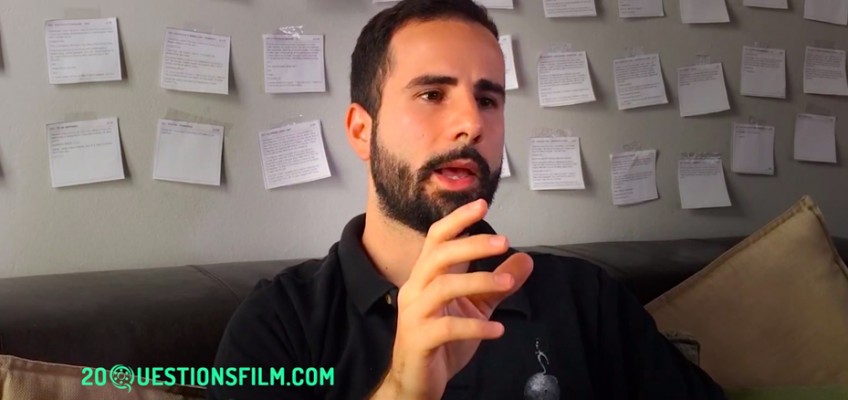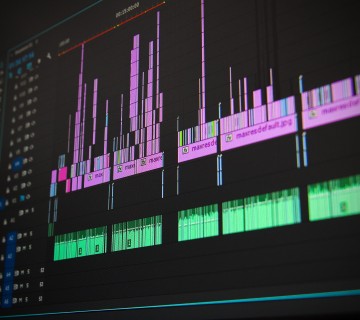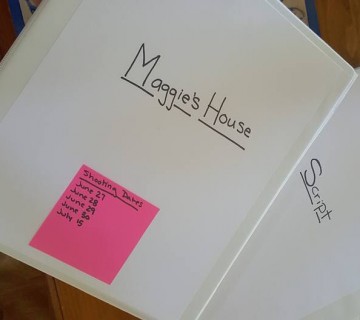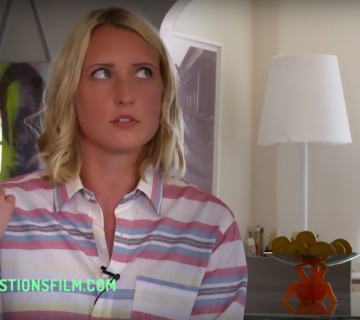We’re excited to be bringing you the fourth video interview with creative director, independent filmmaker and motion graphics designer on multiple Marvel projects (yes, those movies), Federico Ponce, as he sheds some light on what ‘Motion Graphics’ actually is.
He did the title art for Avengers, Iron Man, Thor, District 9, The Twilight Saga – the list goes on and on. In short, he knows what he’s talking about.
Federico Ponce may not yet be a household name outside a tight-knit Motion Graphics circle in Los Angeles, but chances are you know his work nevertheless. As a visual artist and creative director, he has designed the title art for movies like Avengers, Thor, Iron Man, District 9, The Twilight Saga and many more. He has also designed a handful of your favorite movie trailers and directed numerous commercials. And now he’s working on his own project, “Sebastian: The Slumberland Odyssey” – all of which he’ll be telling you more about in the videos we’ll be posting over the next couple of weeks.Let us know in the comments what you think. And learn more about Federico’s work here.
Read Transcript “What Is Motion Graphics?”
Federico: Motion graphics started out as either a combination of design and animation. It wasn’t necessarily character animation and it wasn’t necessarily effects animation like fire in a movie or an explosion or a car blowing up or anything like that. It was more like a stylized approach to a solution to a problem. So for example, if a client came to you and said, ‘Hey, I need a commercial and I need to show the passion of this car and how it touches the life of people,’ then you’d bring in motion graphics artists and try to figure out what the typography says about the car, what the effects – maybe the car shoots out lights and then the lights connect with people and it lights them up and then everybody rides the car. So it’s sort of a hybrid of visual effects and typography and design put into motion. And it’s usually for TV commercials, web, maybe some banners, and things like that.
Federico: But it’s a little bit of a different animal than visual effects because most people in motion graphics have a design background and love the geekiness about typography but also are sort of generalists – so they’ll know a little bit about how to make water, they’ll know a little bit about how to make fire, they’ll know a little bit about how to make a dinosaur or something.. Whereas people in visual effects, you go to the guy that animates claws, and all he does is animate claws, and he’s really good at animated claws but that’s it – he doesn’t know about typography, or anything else and probably loves Comic Sans or something (laughs).
Federico: But these visual effects guys are EXTREMELY good – they’re really, really good and they’re really, really good about one certain part of the production pipeline.
Federico: The other difference between motion graphics and visual effects is that motion graphics projects tend to be a lot shorter, maybe a month or two, three months at the most if they’re really involved, requiring a lot more work. Some of the higher end computer generated images in commercials might require a lot and actually a fusion of both motion graphics and visual effects, but the visual effects projects take years, one or two or three years – it takes a long time. You could have a guy working on the shield of Captain America for years, and all he’s doing is just the shield and iterations and iterations and iterations. So I’d say that’s the biggest difference.
Federico: But the main difference is that the motion graphics is grounded by design and has a design sensibility. Visual effects also has a design but it’s not graphic design. It’s a different type of… If you’re doing a futuristic movie or you’re doing explosions, you have to make sure the explosion seems real, but that takes some design as well, but it’s a different type of aesthetic.
Federico: The other part where they might cross over is when you’re doing high end projects together. Again, if you’re doing a high end commercial, they both come together. If you’re doing a movie, like let’s say Iron Man or Prometheus, and you see the screens and they light up with data, that’s all graphic design. It’s a whole world to its own. When you’re designing that kind of stuff, it’s all about how it would work in the real world and how it has to make some sort of sense.
Federico: That’s what’s really cool about graphic design and motion graphics is that a lot of times, these questions are asked. Like, okay, we’re going to design the imagery in the helmet of Tony Stark. We’re not just going to show gibberish – things have to make sense. He has to have an altitude meter. He’s got to have a temperature gauge. There’s a thought process behind the design part of it. So that would be sort of the difference and convergence.









Join the Conversation →